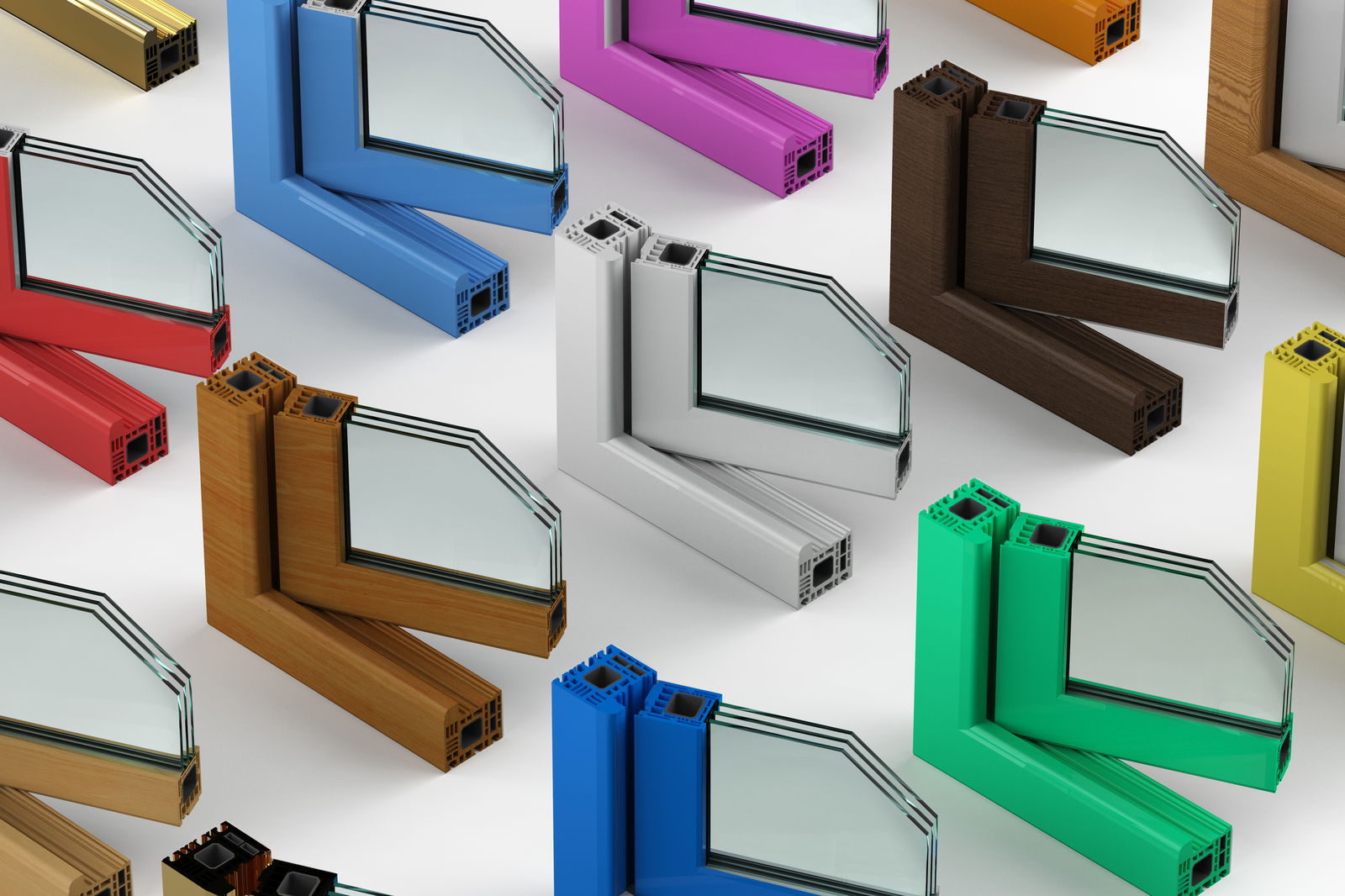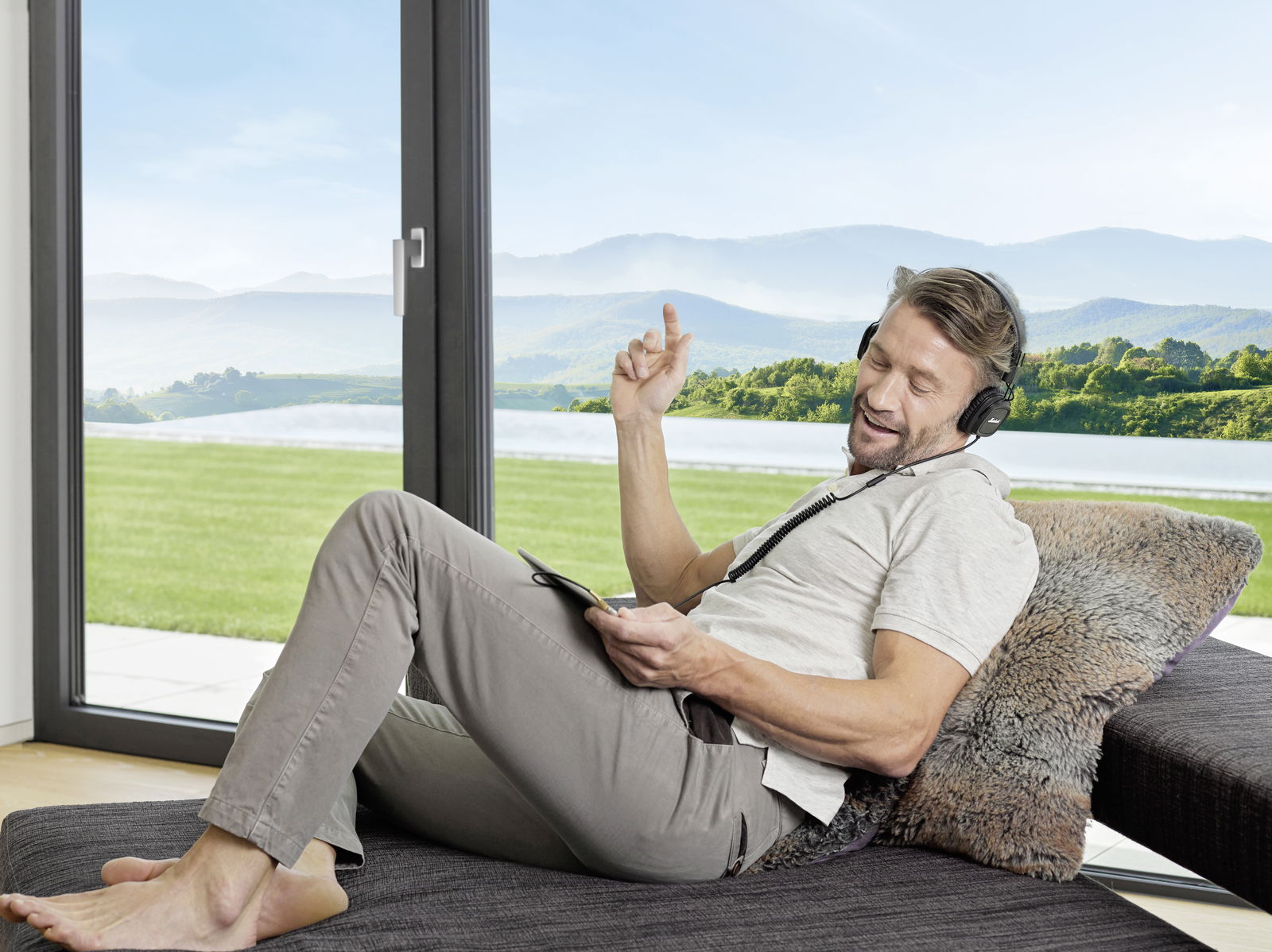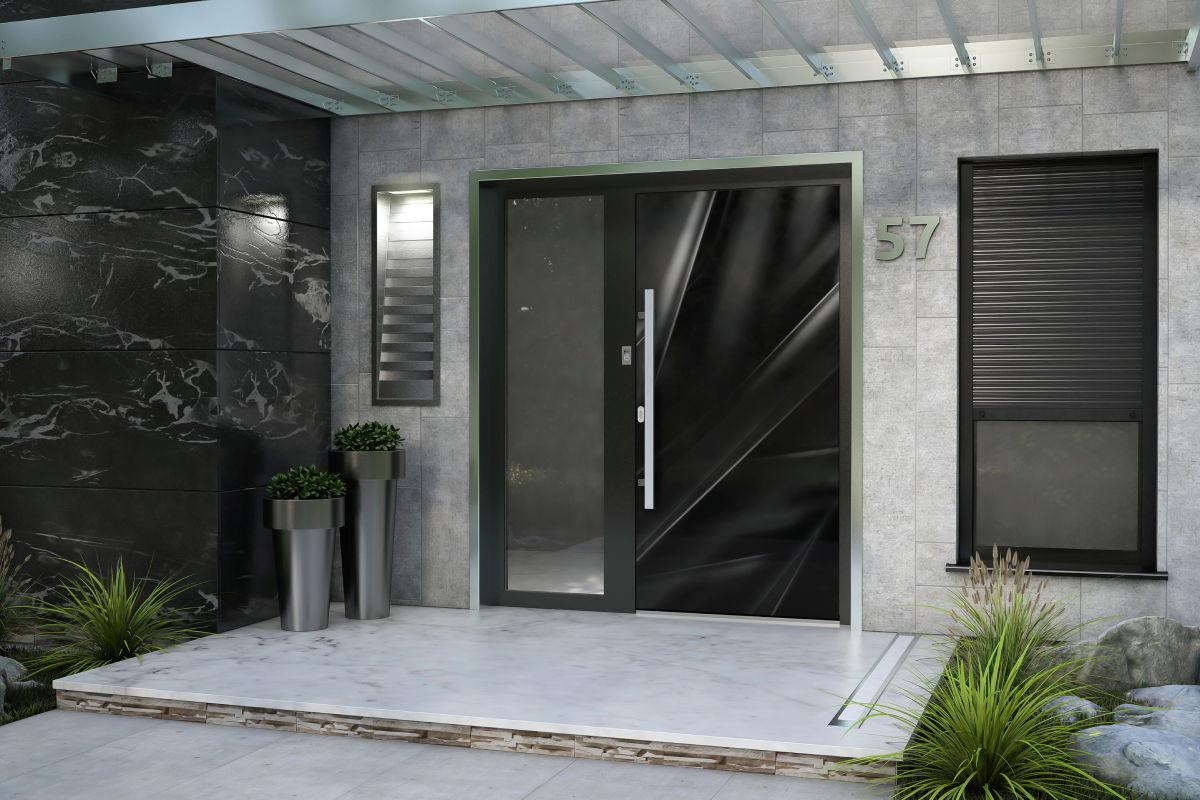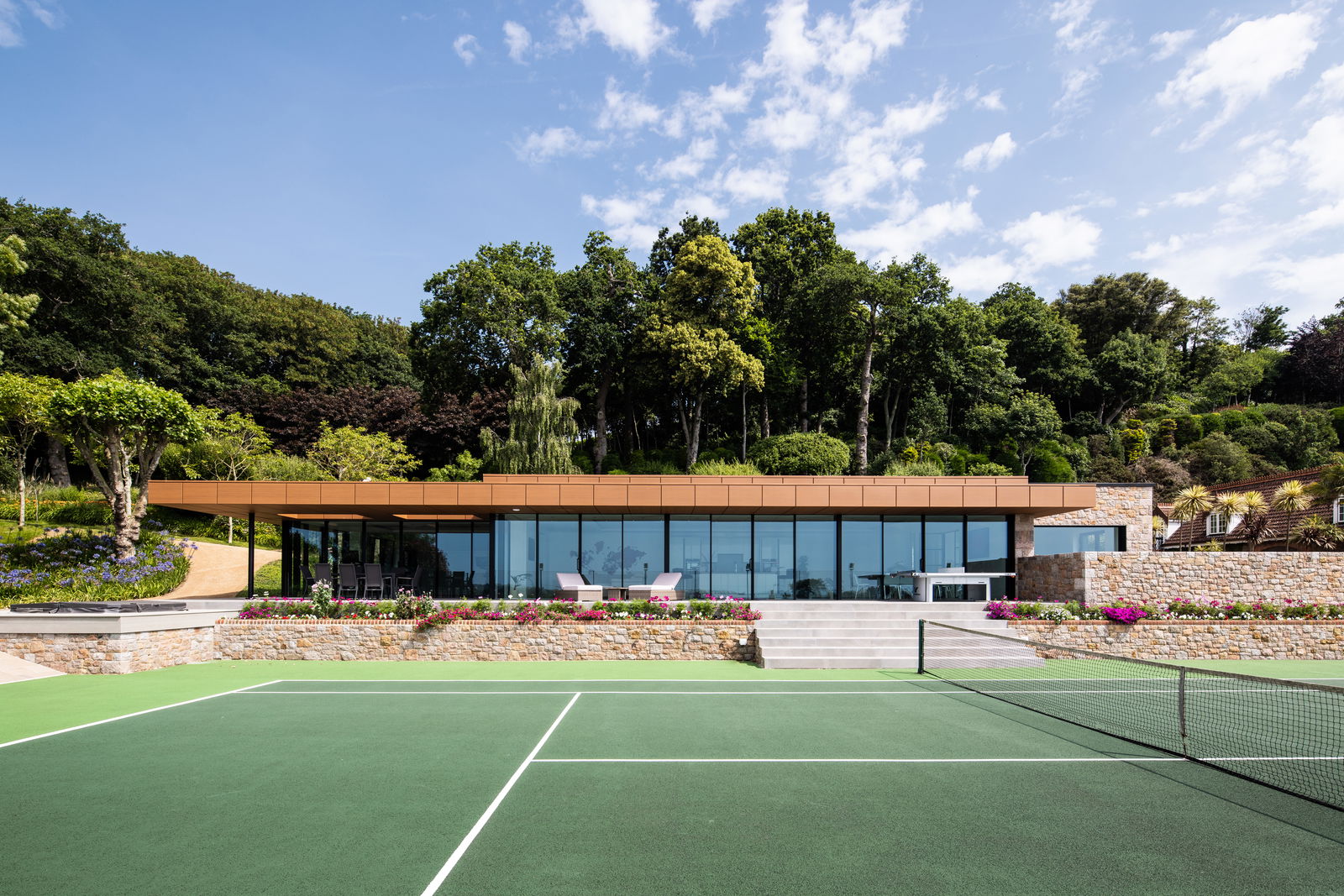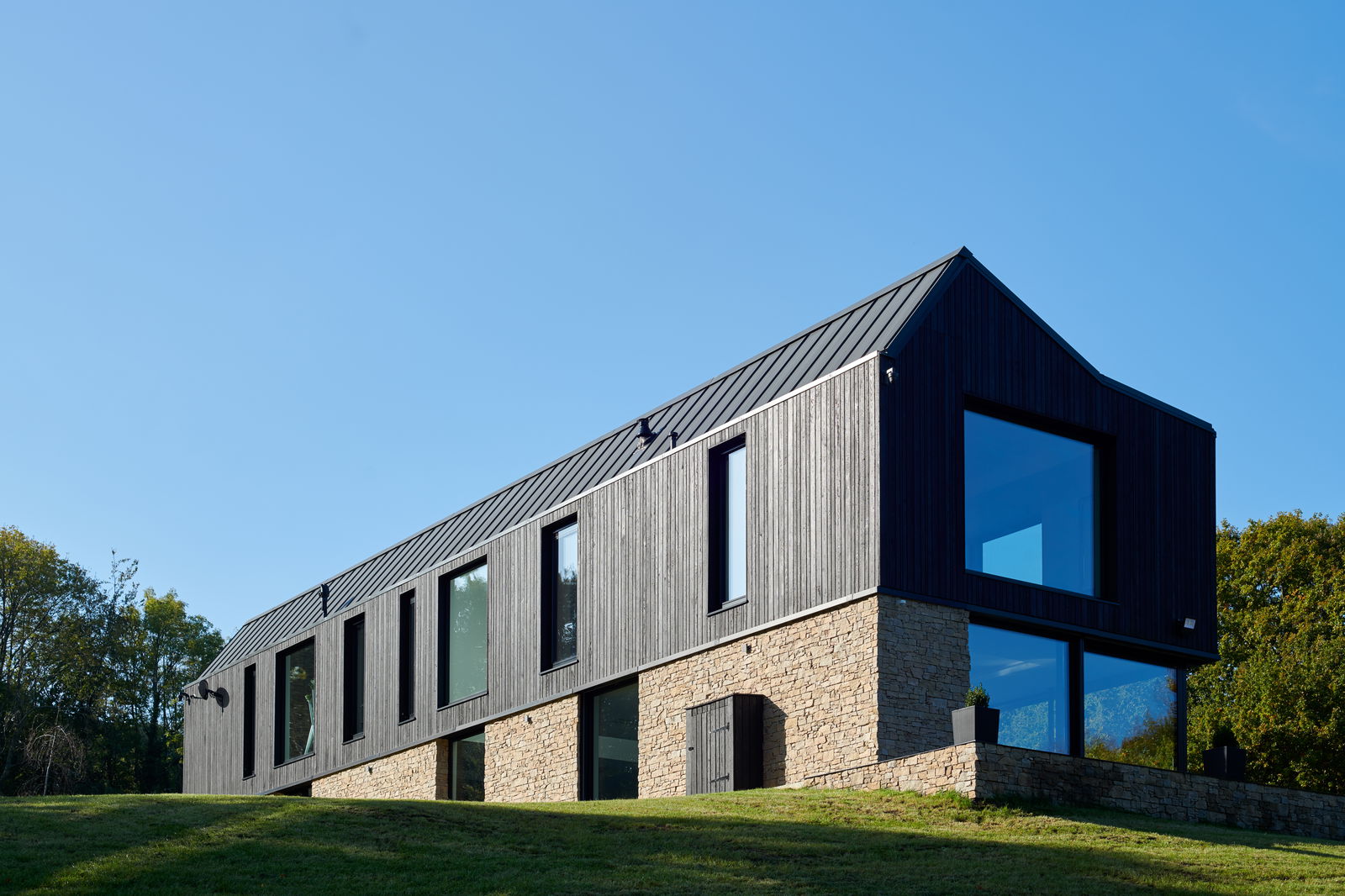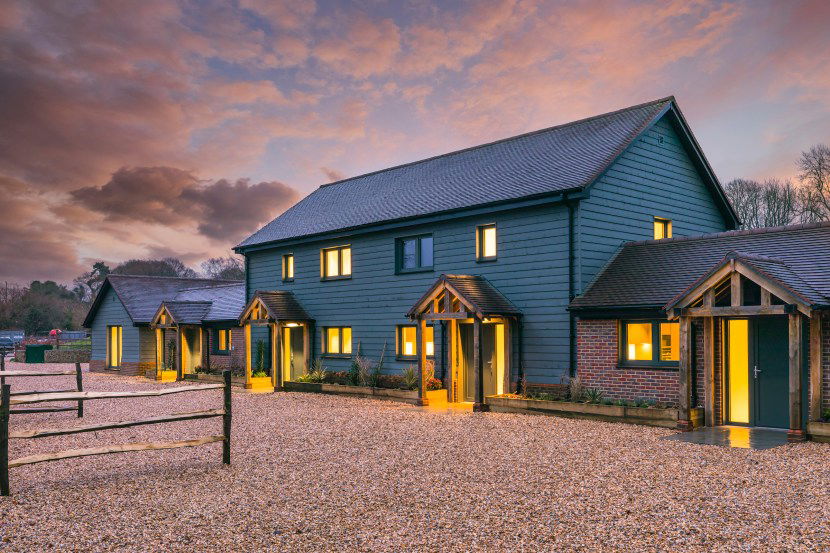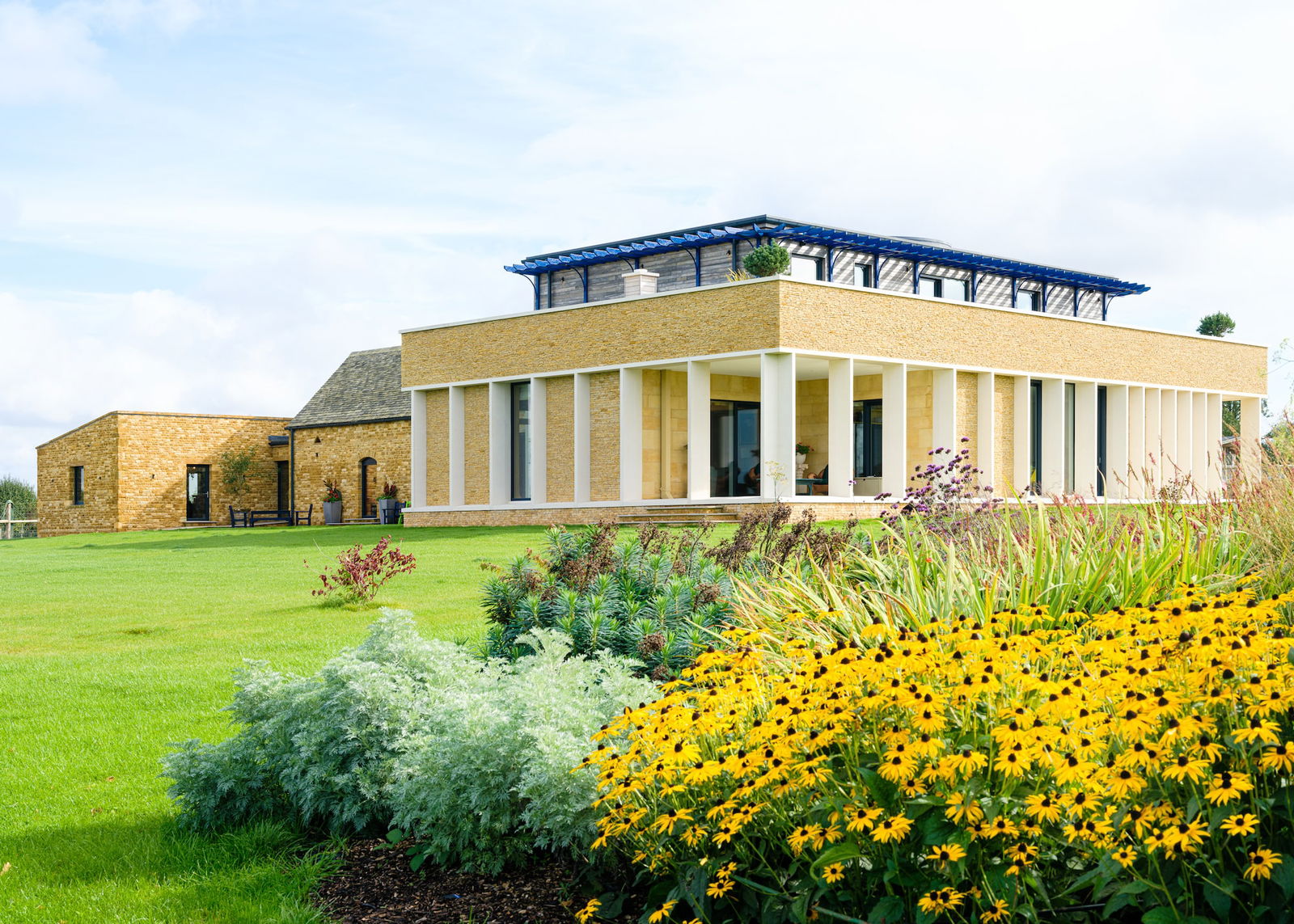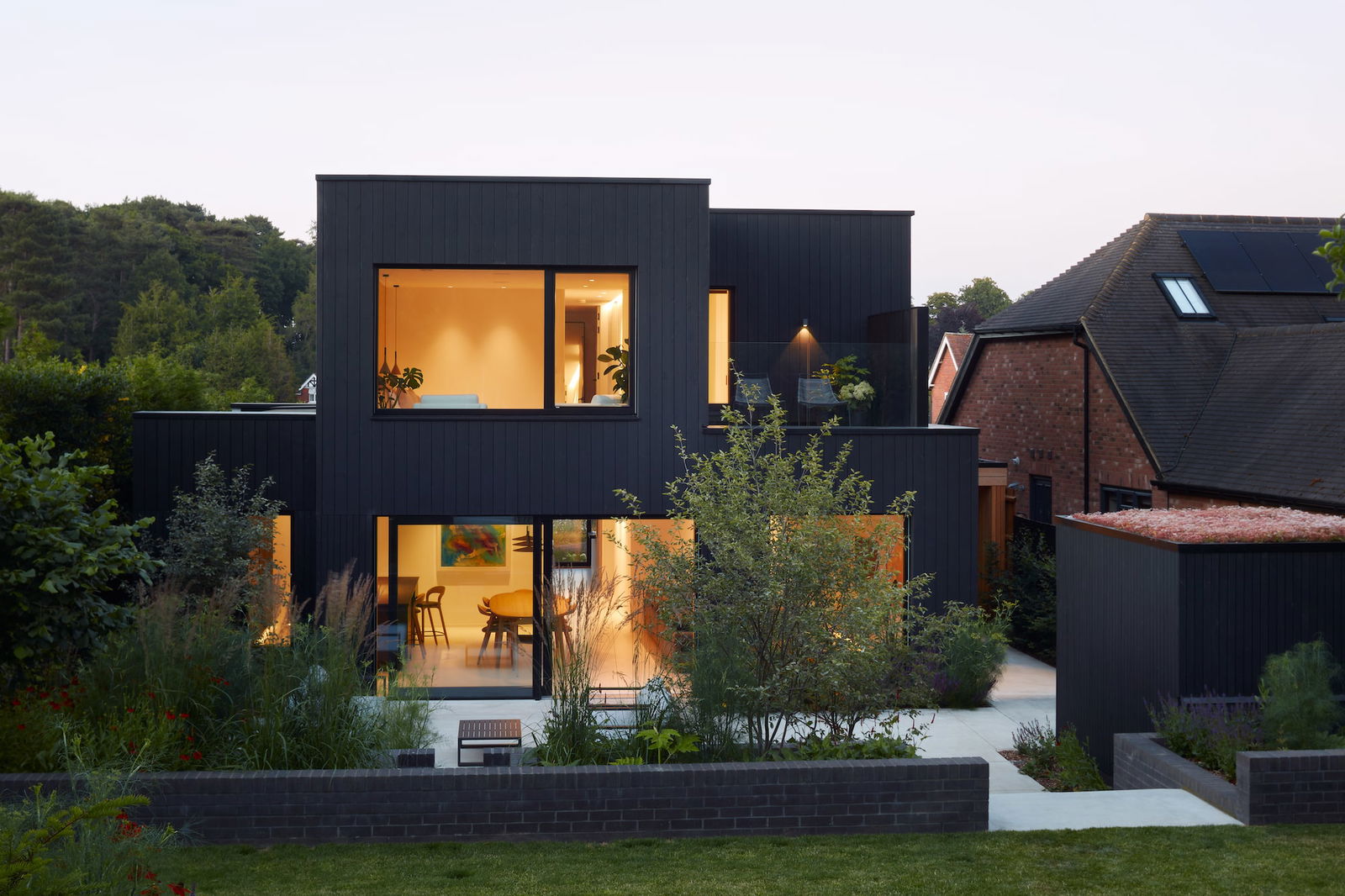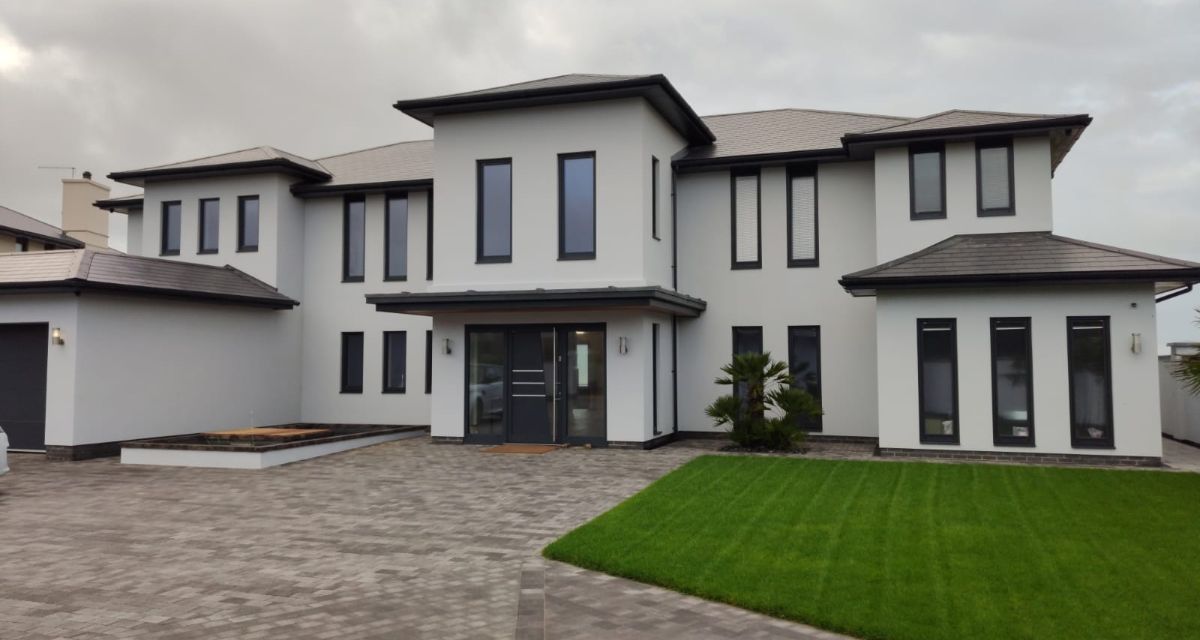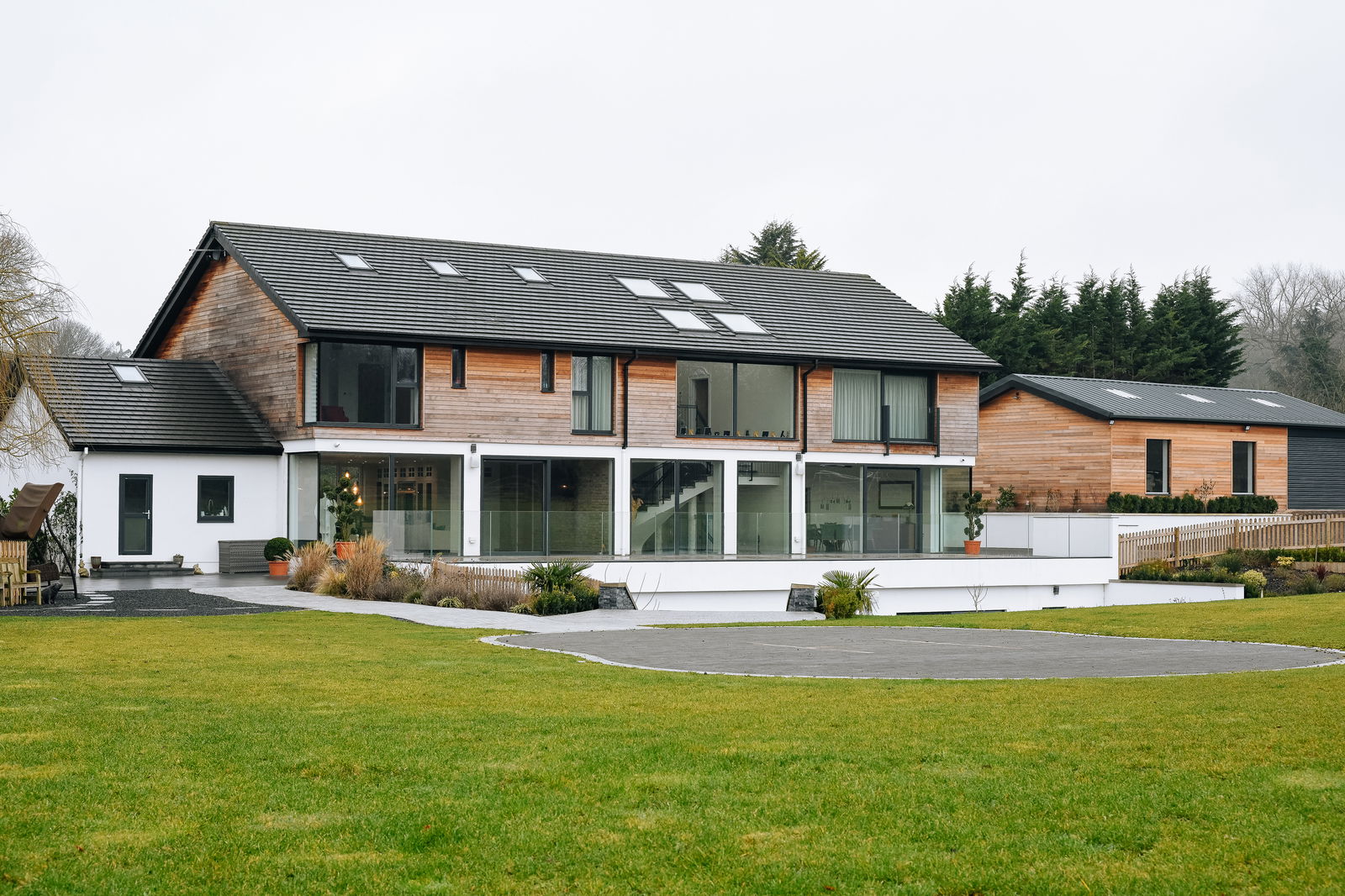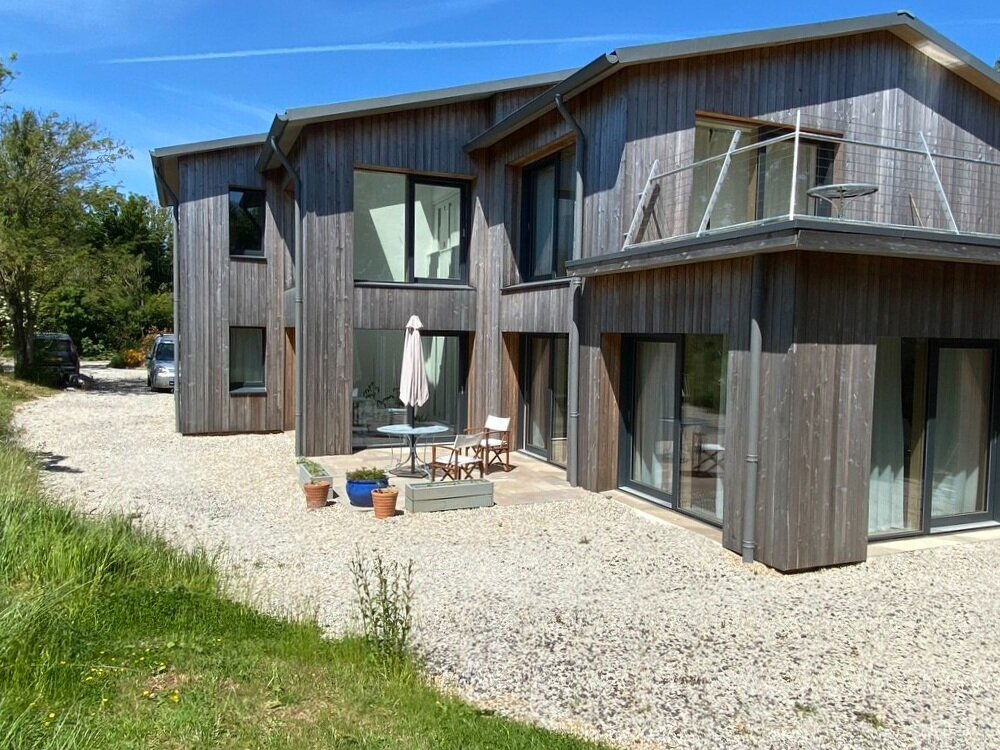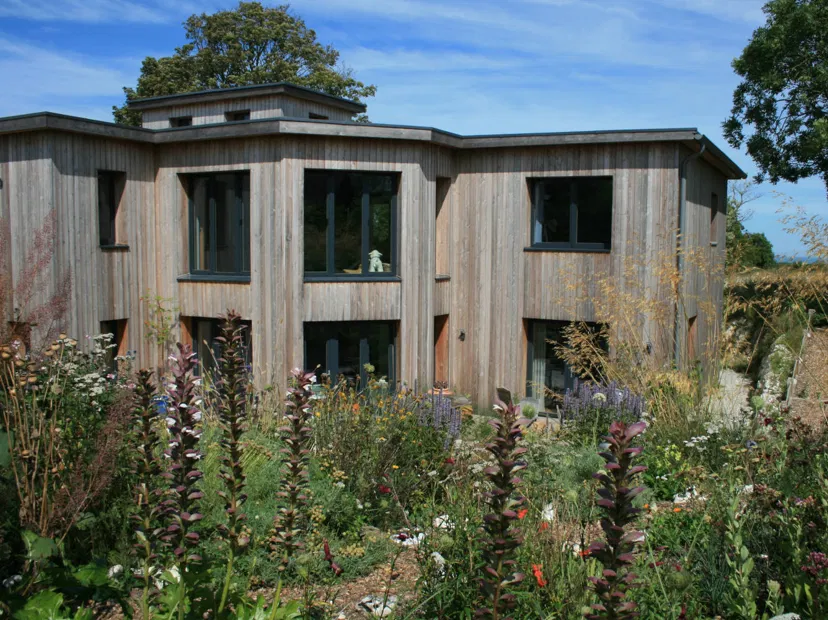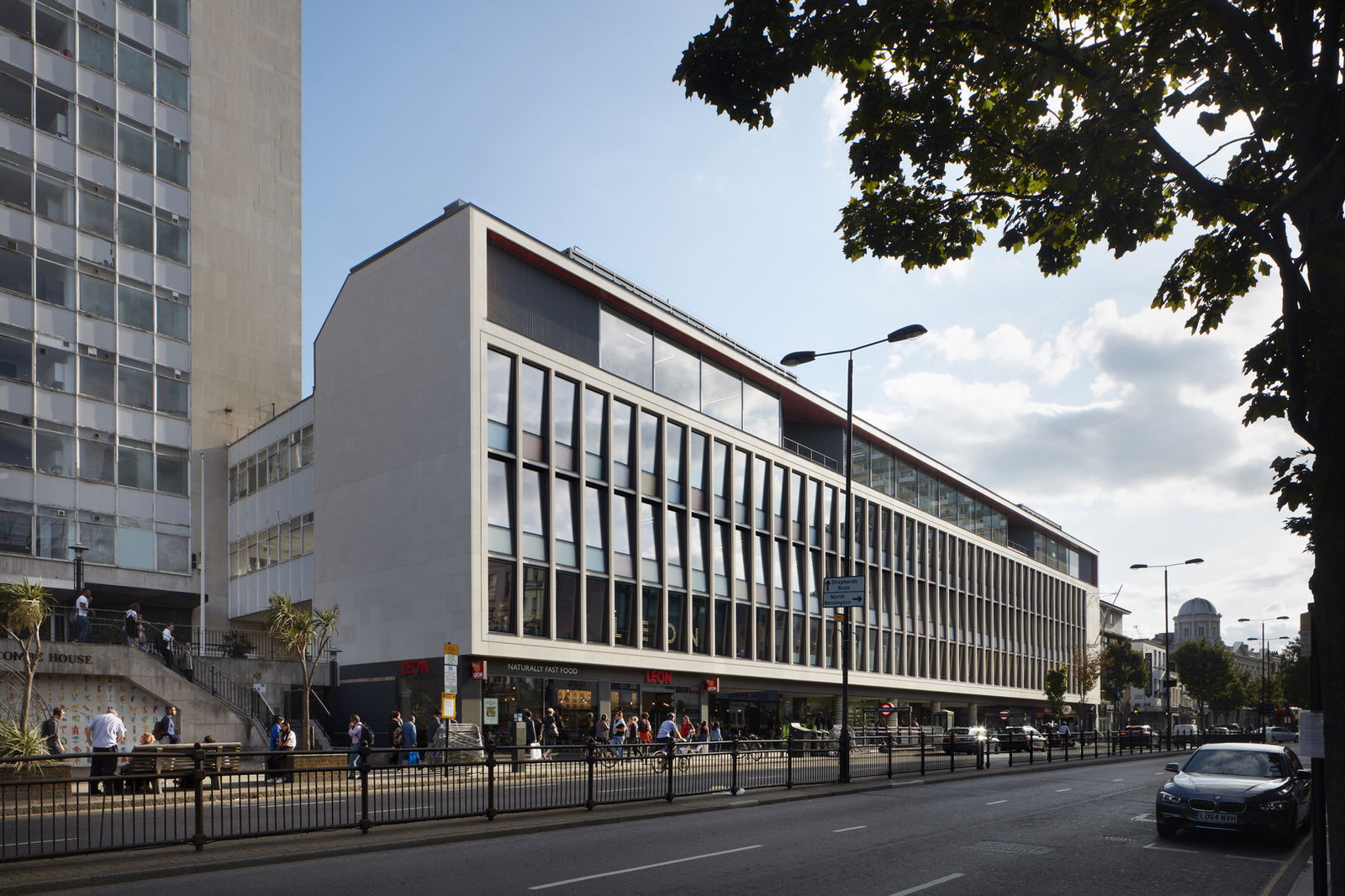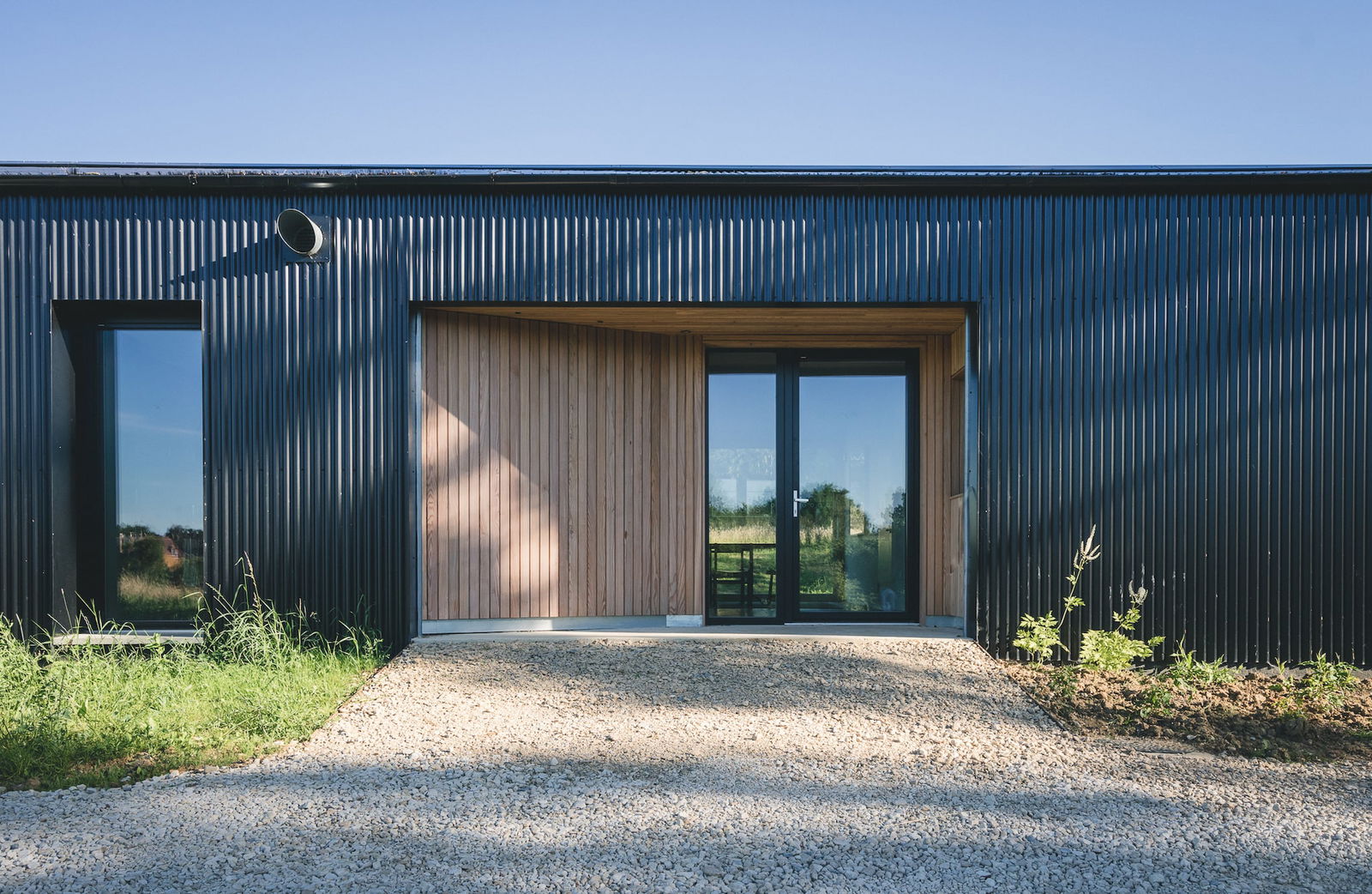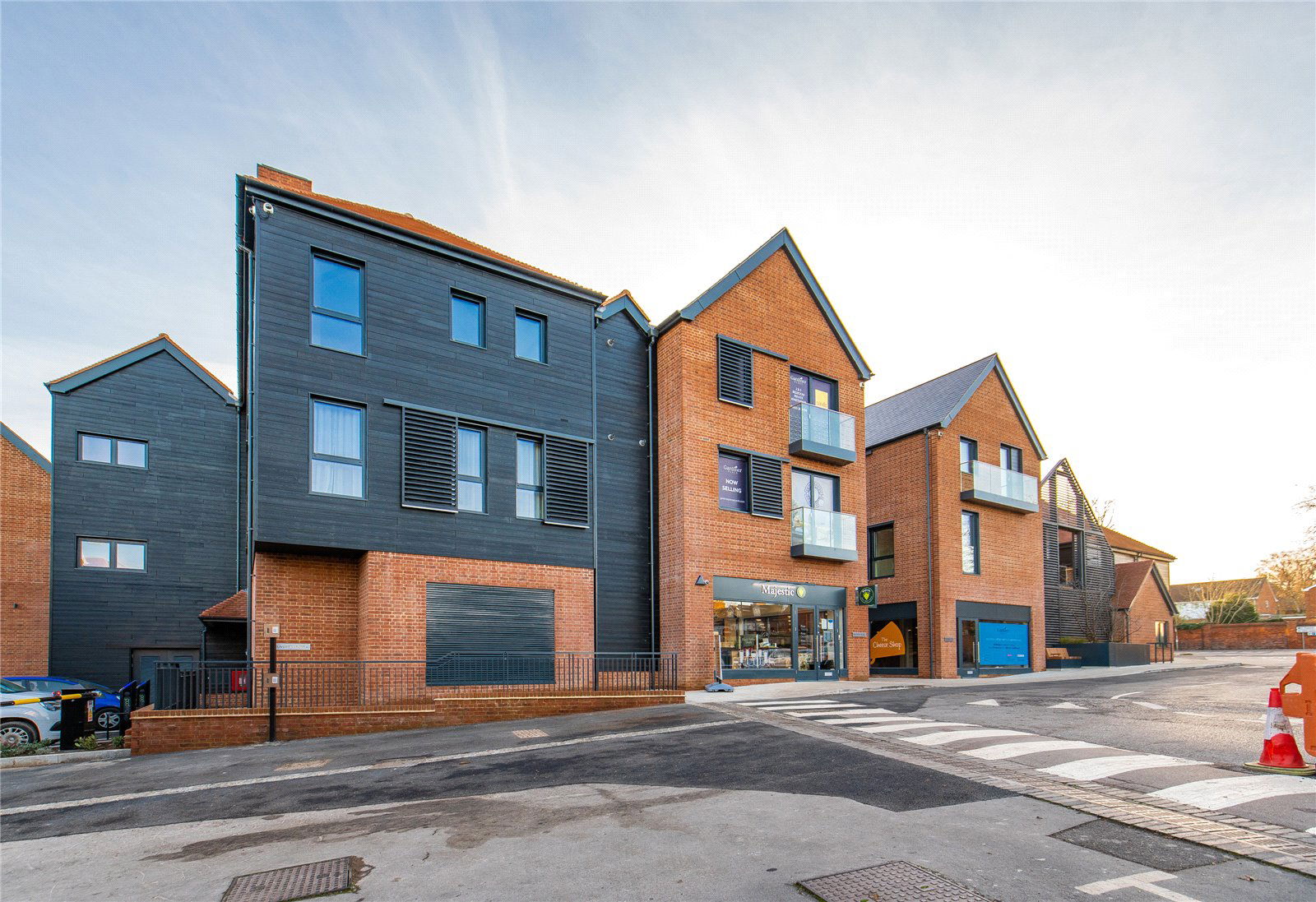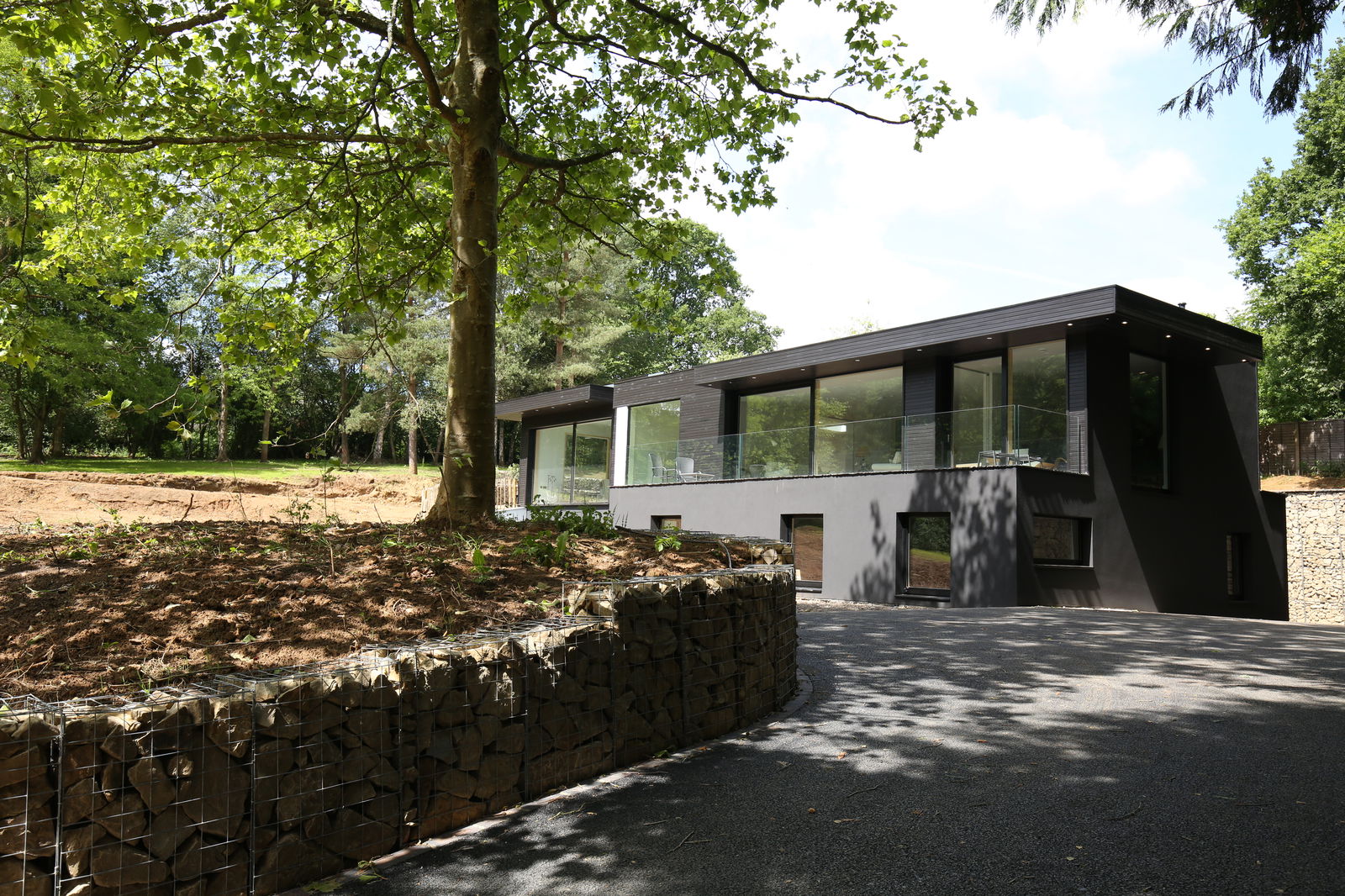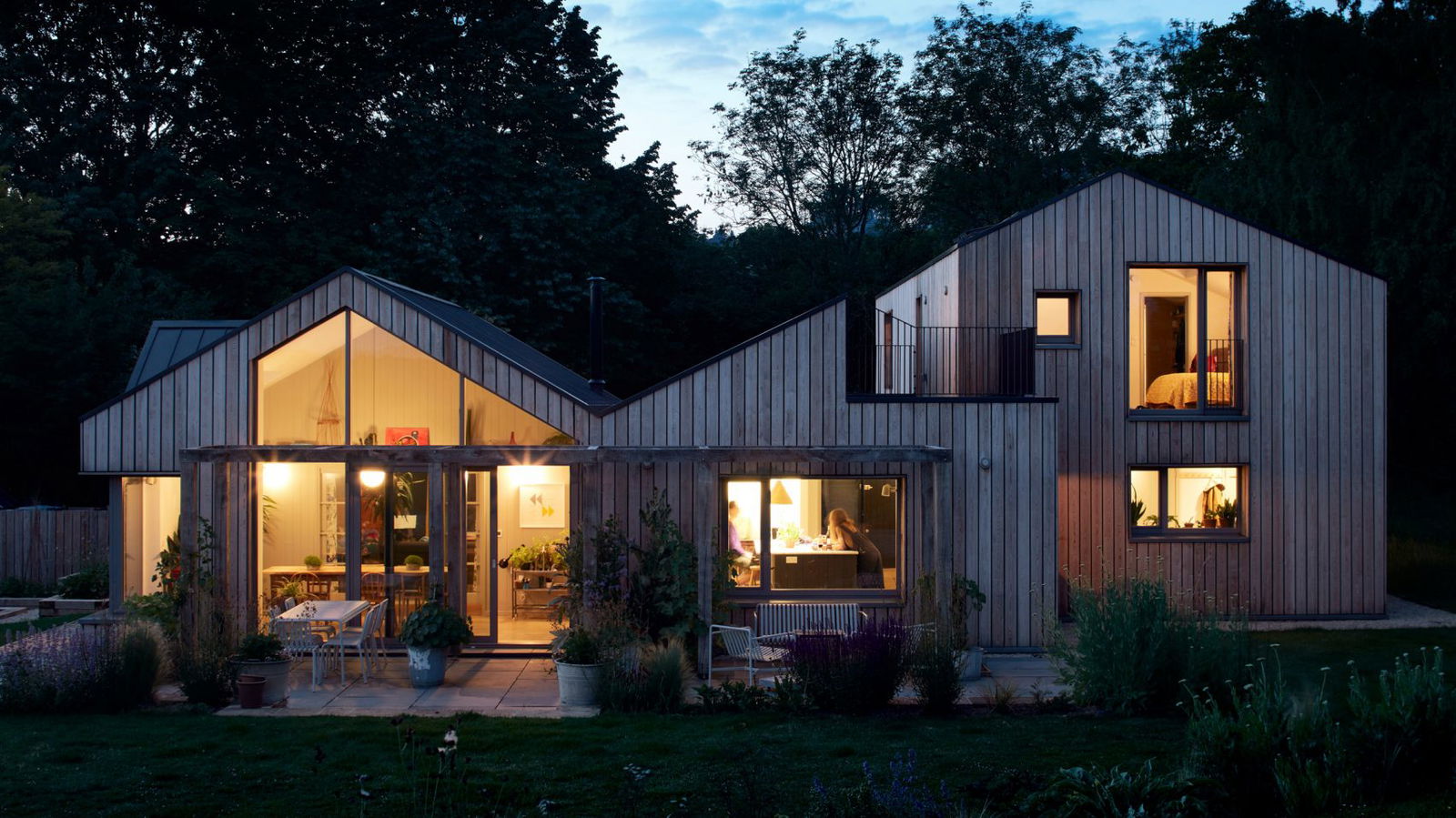The Problem: Uncontrolled Solar Gain
Sunlight entering through windows carries infrared radiation that heats up internal surfaces. This is especially problematic in homes with large glazed façades exposed to direct sun. Without intervention, these areas can become uncomfortably hot, raising energy bills and reducing comfort.
1. Passive Shading: Overhangs, Awnings & Canopies
Preventing solar gain at the source is one of the most effective ways to manage overheating.
Overhangs and Eaves
These architectural features are ideal for south-facing windows and doors. They block high-angle summer sun while allowing low-angle winter sunlight to enter and provide natural heating.
AT-ECO Insight: In coastal projects across Brighton and Eastbourne, we’ve seen how a 50–60cm overhang dramatically reduces summer glare and heat—while still welcoming in winter light.
Design Tip: The correct depth depends on the window height and orientation. Your architect and shading consultant can help determine the ideal projection using solar modelling tools.
Canopies and Awnings
Retractable fabric or aluminium awnings offer seasonal flexibility. Fabric models are lower in embodied carbon, while aluminium provides durability and optional motorised control.
Maintenance Tip: Clean fabric awnings with mild detergent twice a year and inspect fixings annually.
2. External Shading: Proven Systems from Internorm & Drutex
When full control over solar gain is needed, external shading offers exceptional results. These systems block infrared radiation before it reaches the glass, preventing indoor heat build-up.
AT-ECO Insight: Coastal clients in Dorset and Bournemouth have reported up to 10°C cooler room temperatures after installing external blinds—transforming spaces once prone to overheating.
Why They Outperform Internal Blinds:
- Block infrared rays before entering your home
- Reduce reliance on air conditioning
- Protect furnishings from UV damage
- Can be integrated into smart home systems
Maintenance: Annual cleaning of tracks and inspection for debris ensures optimal performance.
3. Integrated Blinds: Built-In Shading with Minimal Upkeep
Internorm’s integrated blinds are housed between the glazing panes of select window systems—safely enclosed to protect them from dust, damage, and everyday wear. Unlike traditional blinds, they offer a clean aesthetic with virtually no cleaning required and minimal ongoing maintenance.
While the blinds are sealed within the glazing cavity, they remain fully accessible when needed. Internorm’s clever design allows homeowners to access the blinds for cleaning or service without dismantling the entire unit—no technician required for basic tasks. This user-friendly approach combines the durability of sealed units with practical day-to-day usability.
Additional benefits include:
- Excellent solar and thermal control
- Smooth privacy and glare reduction
- Smart operation via energy self-sufficient I-tec Shading (no wiring, no batteries)
Internorm’s integrated blinds offer a perfect blend of style, comfort, and user-friendly maintenance—ideal for modern living.
I-tec Shading Technology:
These integrated blinds operate via solar-powered photovoltaic panels and an internal battery. The system automatically adjusts based on external temperatures—no wiring required.
Clarification: I-tec Shading is available on specific openable Internorm window models only—not for fixed or large glazed units.
4. Ventilation: Shading Alone Isn’t Enough
Managing indoor temperature also requires effective airflow. While AT-ECO does not supply or install ventilation systems, we frequently work on projects where ventilation is integrated as part of the wider design.
Natural Ventilation
- Cross Ventilation: Opening windows on opposite sides of the home promotes natural airflow and heat evacuation.
- Stack Ventilation: Utilises the natural rise of warm air—drawing cooler air from below as it exits through top vents or rooflights.
MVHR Systems (Mechanical Ventilation with Heat Recovery)
These systems are ideal for modern, airtight homes. Though not supplied by AT-ECO, we often collaborate with architects or consultants working with MVHR.
Benefits:
- Recovers up to 95% of extracted heat
- Filters allergens, dust, and humidity
- Reduces heating demand significantly
- Supports consistent comfort in all seasons
5. Environmental Benefits of Smart Shading
| System | Environmental Benefit |
|---|---|
| Overhangs & Canopies | Passive cooling with no energy input |
| External Shading Systems | Reduce air conditioning use by up to 50% |
| Integrated Blinds | Improve insulation, reduce cooling and heating loads |
| MVHR Systems | Lower heating needs, improve indoor air quality |
6. Planning & Regulation Considerations
Before making shading or architectural changes:
- Local Building Regulations: May restrict shading projection sizes
- Conservation Areas: Visual alterations may need formal approval
- Listed Properties: External changes may require listed building consent
Note: While AT-ECO doesn’t manage the planning process, we can offer product-based advice and suggest alternatives where planning constraints are a concern.
Conclusion: Light Without the Heat
Overheating through glazed areas isn’t inevitable. By combining high-performance glazing, well-designed shading, and smart ventilation planning, you can enjoy open, sunlit rooms that stay cool and comfortable.
At AT-ECO, we specialise in premium window and shading systems—tailored to your needs and the architectural context of your home. From Internorm I-tec Shading to expertly specified external blinds, we’ll help you select the right system for better living.






